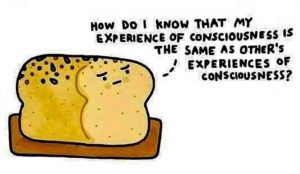OM!

Namaste🙏 and welcome! I am Priya, a humble seeker and privileged student of advaita vedAntA under the tutelage of Swami Paramarthananda. Having benefitted greatly from a changed life perpective that the beautiful teachings of vedAntA have granted me, I wish to share the liberating knowledge with others who may be interested.
I propose to take you on a journey, one that is fun, full of exciting twists and turns with many new things to learn and discover, through a series of blogs. Every other trip we’ve been on so far has left us with beautiful memories. This is one journey that will change inside out the very One making the memories! Be ready to be introduced to a new, upgraded version of yourself at the end of this journey! Ready yourself for the biggest change of your life!
This journey will be in the form of blogs written in simple language incorporating everyday examples. The highest, most profound and subtlest teachings of the self and God as expounded by the vedic vision of advaita vedAntA will be unfolded here. The word “unfolding” is of significance here! Many of us spiritual seekers in the initial phase of enthusiastic spiritual seeking read and listen to matters pertaining to spirituality in a very random fashion from literally all over the place. While this is certainly not bad, such randomness is not very fruitful and productive in terms of the results it yields. Afterall, the very idea we pursue spirituality is to effectuate change in the way we live and react rather than it simply remaining as an intellectual collection of new jargon in our already crowded, busy minds. Just as a folded, ironed shirt has to be carefully unfolded in order for it to be usuable, spiritual teachings, if they have to be of good use to us mentally and emotionally, necessarily HAVE to be unfolded and received in a very systematic manner and that is the aim of these blogs.
Whom are these blogs for?
The world is in dire need of love, peace, satisfaction, compassion, contentment, kindness, unity, happiness. Today we are living life focussed on the most superficial differences which results in dividing us more and more. As long as we continue to stay divided at the level of race, colour, Religion, language, etc. any chances for happiness, untity and peace will only be a far cry. Spiritual study is the means of going past the differences even while living in them, by effectuating shift in the very way we think by teaching us to turn our awareness towards the unifying factor that connects us all. Such study is beyond the scope of Religion which still is at the realm of difference. That means, anyone with an open enough mind ready for change, belonging to any group, culture, country, sect, race or religion is welcome to join the journey.
Why read my blogs?
No, I am no learned teacher but an enthusiastic seeker and student as much as you are. That means I have the same questions and doubts that you have! By writing these blogs, from my standpoint I stay completely immersed in the teachings which helps my understanding and assimilation better while from your standpoint I will raise the same kind of doubts and questions that might pop up in your mind. There is absolutely no taking away or replacing the process of receiving these profoundly subtle teachings from an Enlightened teacher!
I am blessed with a compassionate preceptor who gives me the teachings and also am fortunate to have plenty of time to devote to spiritual study. Into seemingly simple, short blogs, many many hours of study and contemplation go. I am happy to consolidate my efforts into blogs which might run to be about 12-14 minute reads every 10 days initially and then every 15 days as things start getting hotter! That gives a busy person enough ‘catch up time’ to take it in before the next blog is published. You don’t have to scramble and search the internet for more spiritual information, they will come to you in the right sequence as they came to me, at the right time! advaita vedAntA texts are in Sanskrit(what is considered the Mother of all Languages) and I will provide Sanskrit equivalents in red wherever appropriate. In the blog, points that I would normally consider important enough to highlight while studying will appear in green. The title will be followed by an average reading time in brackets to indicate how much time will approximately be needed for the blog.
Join me on a journey like none other and experience for yourself all the wonderful possibilities that lay ahead!
OM! Peace!
Picture credits:pixabay.com

 Quoting from the talk of an Advaita teacher on the message of the aitareya Upanishad:
Quoting from the talk of an Advaita teacher on the message of the aitareya Upanishad:

